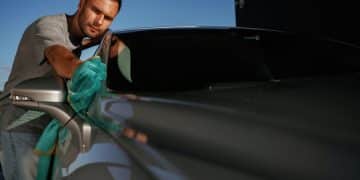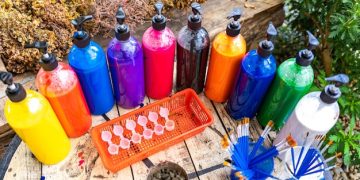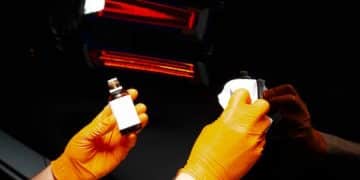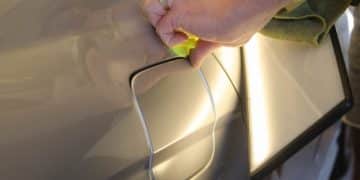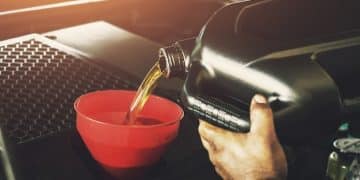Best Car Wax for Your Paint Type: 2025 Guide
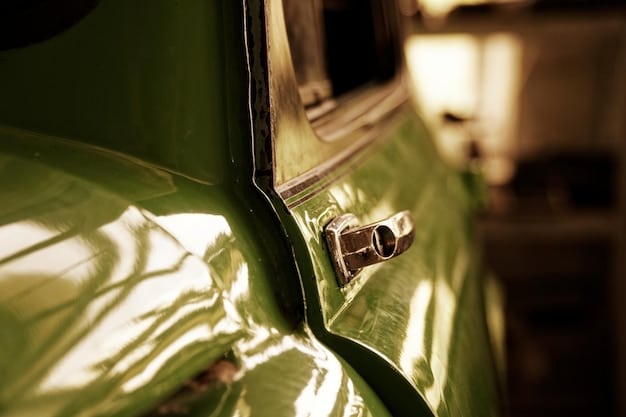
Choosing the correct car wax is paramount for preserving your vehicle’s finish, providing a protective barrier against environmental damage and enhancing its aesthetic appeal by complementing specific paint types.
Understanding which car wax best suits your vehicle’s paint type is no longer just a detailer’s secret; it’s essential knowledge for any car owner looking to maintain their investment. This comprehensive guide, The Ultimate Guide to Choosing the Right Car Wax for Your Vehicle’s Paint Type (Updated for 2025), delves into the nuances of modern car wax formulations, ensuring your car not only shines but is also adequately protected against harsh elements.
The Science Behind Car Wax: Why It Matters for Your Paint
Car wax is more than just a cosmetic enhancer; it’s a critical protective layer for your vehicle’s paintwork. It acts as a sacrificial barrier, shielding the delicate clear coat from harmful environmental contaminants, UV radiation, and minor abrasions. Over time, factors like acid rain, bird droppings, road salt, and industrial fallout can degrade your paint, leading to dullness, oxidation, and even permanent damage. A high-quality wax helps mitigate these risks, maintaining the paint’s integrity and luster.
The choice of wax profoundly impacts this protective capability. Different formulations offer varying degrees of durability, shine, and ease of application. Understanding the underlying chemistry of these products is crucial for making an informed decision that aligns with your vehicle’s specific needs and your detailing goals.
Understanding Paint Layers and Wax Interaction
Your vehicle’s finish is composed of several layers, each serving a distinct purpose. At the base is the primer, followed by the color coat (basecoat), and finally, the clear coat. The clear coat is the uppermost layer, responsible for the paint’s gloss, depth, and protection against environmental elements. Wax works by bonding to this clear coat, filling in microscopic imperfections, and creating a smooth, hydrophobic surface.
- Primer: Provides a uniform base for subsequent layers and helps prevent rust.
- Color Coat: Defines the vehicle’s color, but offers minimal protection.
- Clear Coat: The transparent protective layer that delivers gloss and defends against UV, scratches, and contaminants.
- Wax/Sealant: The final layer of defense, enhancing shine and providing additional protection.
The interaction between wax and the clear coat is complex and depends heavily on the wax type. Natural waxes like carnauba offer a deep, warm glow, while synthetic sealants provide superior durability and chemical resistance. Ceramic coatings, a newer innovation, offer even greater, long-lasting protection, blurring the lines between traditional waxes and permanent clear coat upgrades.
Environmental Threats and Wax Protection
Every day, your car faces a barrage of environmental threats that can compromise its paint. From the relentless assault of UV rays that cause oxidation and fading to airborne pollutants that etch into the clear coat, the paint is constantly under attack. Wax provides a crucial shield against these elements.
For instance, UV inhibitors in some waxes help prevent sun damage, while hydrophobic properties repel water, making it harder for water spots and acid rain to adhere. The physical barrier created by wax also minimizes light scratching and marring, preserving the paint’s smooth finish. Regularly waxing your car is an investment in its long-term appearance and resale value, far outweighing the time and cost involved.
Decoding Wax Types: Carnauba, Synthetics, and Ceramics
The car wax market can be overwhelming, with an array of products claiming to be the best. However, most waxes fall into three main categories: carnauba, synthetic sealants, and ceramic coatings. Each offers distinct advantages and disadvantages, making them suitable for different applications and user preferences. Understanding these differences is key to selecting the right product for your car.
Your choice depends on factors like desired aesthetic, durability needs, environmental conditions, and the effort you’re willing to put into application. A classic car enthusiast might prioritize the warm glow of carnauba, while someone living in a harsh climate might opt for the robust protection of a ceramic coating.
Carnauba Wax: The Classic Choice for Deep Shine
Carnauba wax, derived from the leaves of the Brazilian carnauba palm tree, has long been revered for its unparalleled ability to produce a deep, warm, and rich luster on automotive paint. Often referred to as “the king of waxes,” carnauba creates a wet-look finish that enhances the depth and vibrancy of any color, especially dark shades.
- Natural Origin: Sourced from palm trees, making it a natural, environmentally friendly option.
- Aesthetic Appeal: Delivers an unmatched warm, deep glow and wet-look shine.
- Application: Typically easy to apply and remove, though some pure carnauba waxes can be harder to work with.
- Durability: Offers good but relatively short-lived protection, usually lasting 1-3 months.
Despite its relatively shorter lifespan compared to synthetic alternatives, the visual appeal of carnauba wax remains a top choice for detailing enthusiasts and show car owners. It’s ideal for those who enjoy the waxing process and desire that classic, deep-reflective finish.
Synthetic Sealants: Modern Protection and Durability
Synthetic sealants emerged as a more durable alternative to traditional carnauba waxes. These products are formulated with polymers and acrylics that create a strong, protective bond with the paint surface. They often feature UV inhibitors and advanced hydrophobic properties, making them excellent for daily drivers exposed to various environmental challenges.
Synthetic sealants generally offer superior longevity, often lasting 4-6 months or even longer, depending on the product and environmental exposure. While they might not replicate the exact “warm glow” of carnauba, modern synthetic sealants produce a clear, sharp, and reflective shine that is highly appealing. Their ease of application and extended protection make them a popular choice for busy car owners.
Ceramic Coatings: The Pinnacle of Long-Term Protection
Ceramic coatings represent the latest evolution in paint protection technology. Composed of silica (SiO2) or titanium dioxide (TiO2), these coatings form a semi-permanent bond with the paint, creating an extremely hard, durable, and hydrophobic layer. They offer unparalleled protection against scratches, chemical etching, UV damage, and environmental fallout.
Advantages of ceramic coatings:
- Extreme Durability: Can last for several years with proper maintenance, significantly longer than waxes or sealants.
- Superior Protection: Unmatched resistance to scratches, chemicals, UV, and oxidation.
- Intense Hydrophobicity: Water beads off surfaces effortlessly, making washing easier and reducing water spots.
- Enhanced Gloss: Provides a candy-like gloss and makes the paint look richer and deeper.
While ceramic coatings require more meticulous preparation and application, their long-term benefits and reduced maintenance needs make them a worthwhile investment for many car owners. They essentially create a secondary clear coat that is much harder and more resilient than the original.
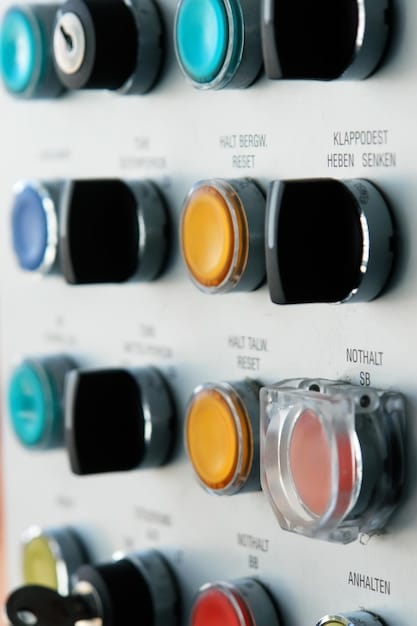
Matching Wax to Paint Type: The Key to Optimal Results
The diversity of automotive paint types means that a one-size-fits-all approach to waxing is rarely optimal. Different paint finishes — from solid colors and metallics to pearlescents and matte — respond uniquely to various wax formulations. Understanding these nuances is crucial for achieving the best aesthetic and protective results.
For instance, a wax that excels on a dark, solid clear coat might not offer the same depth on a metallic finish, or could even be detrimental to a delicate matte paint. Tailoring your wax choice to your vehicle’s specific paint type ensures maximum effectiveness, enhancing its appearance and longevity.
Solid and Dark Colors: Maximizing Depth and Reflectivity
Solid colors, especially dark shades like black, navy, and deep red, are particularly adept at showcasing the depth and reflectivity that certain waxes provide. These colors benefit immensely from waxes that can fill in minor imperfections and create a mirror-like finish.
- Carnauba Wax: Highly recommended for dark and solid colors. Its natural oils and pigments create a warm, “wet look” that accentuates depth.
- Premium Synthetic Sealants: Modern synthetic formulations can also provide excellent gloss and protection, often with more clarity than traditional carnaubas, which can be beneficial for showing off rich pigments.
The goal for solid and dark colors is to achieve a deep, liquid-like shine that reflects light evenly. Avoiding waxes that leave a hazy residue is paramount for these finishes, as streaks and swirls are more noticeable.
Metallic and Pearl Finishes: Enhancing Flake Pop and Sparkle
Metallic and pearlescent paints incorporate tiny flakes (aluminum or mica, respectively) into the base coat to create a shimmering effect. The right wax should complement this effect, boosting the “flake pop” without diminishing the paint’s inherent sparkle.
For these finishes, clarity is often preferred over the deep warmth of carnauba. Products that leave a clear, hard finish allow the metallic or pearl flakes to shine through brilliantly.
- Synthetic Sealants: Generally ideal for metallic and pearl paints. Their clear, highly reflective finish enhances the shimmer without obscuring the flakes.
- Silica-Based (SiO2) Sprays/Coatings: These products offer excellent clarity and gloss, often intensifying the metallic or pearl effect due to their high refractivity.
Avoid heavy carnauba waxes that can sometimes slightly dull the metallic sparkle due to their more opaque nature. The key is to achieve a transparent, high-gloss layer that maximizes light reflection from the flakes.
Matte and Satin Finishes: Specialized Care for Unique Aesthetics
Matte and satin paints have become increasingly popular, offering a distinct, non-reflective aesthetic. These finishes require specialized care, as traditional waxes and polishes can ruin their unique appearance by introducing gloss or uneven sheen.
Using the wrong product on a matte finish can irreversibly damage its flat look, leading to shiny spots or an uneven appearance. Therefore, only products specifically designed for matte or satin paints should be used.
- Matte Sealants: Formulated to protect without adding shine, preserving the distinct matte look.
- Ceramic Coatings for Matte Finishes: Some manufacturers offer ceramic coatings specifically engineered for matte paint, providing long-term protection without altering the finish’s characteristic flatness.
Never use abrasive polishes, compounds, or traditional waxes on matte paint. These products are designed to enhance gloss, which is the opposite of what a matte finish requires. Always consult the vehicle manufacturer’s recommendations or a reputable detailer for matte paint care.
Application Techniques and Best Practices
Even the highest quality wax will underperform if not applied correctly. Proper application techniques are critical for maximizing both the aesthetic benefits and the protective qualities of your chosen wax. This involves more than just spreading the product; it includes meticulous preparation, thoughtful application, and careful removal.
Neglecting any step in the process can lead to swirl marks, streaking, or reduced durability. A well-executed waxing job not only looks better but also ensures that the paint is genuinely shielded from environmental aggressors.
Surface Preparation: The Foundation of a Flawless Finish
Before applying any wax, thorough surface preparation is paramount. This foundational step ensures that the wax bonds properly to the paint, delivering maximum protection and gloss. Neglecting preparation is the most common reason for unsatisfactory waxing results.
- Wash: Begin with a thorough two-bucket wash using a pH-neutral car shampoo to remove loose dirt and grime.
- Decontaminate: Use a clay bar or decontamination spray to remove embedded contaminants like tar, tree sap, and industrial fallout that washing alone cannot remove. This creates a perfectly smooth surface.
- Polish (Optional but Recommended): If there are minor swirls, scratches, or oxidation, a light polish can dramatically improve the paint’s clarity and reflectivity before waxing.
- Panel Wipe/IPA: Finish with an IPA (Isopropyl Alcohol) or panel wipe solution to remove any polish residue or oils, ensuring a clean surface for wax adhesion.
Each of these steps contributes to a pristine canvas, allowing the wax to perform at its best. Skipping steps often means sealing in imperfections, which becomes evident once the sun hits the paint.
Application Methods: Hand vs. Machine Application
The method of wax application can vary, depending on the product and your preference. While hand application is suitable for most waxes, certain products, especially some sealants or lighter waxes, can also be applied with a machine, typically a dual-action polisher.
Hand application is generally safer for beginners and provides tactile feedback, allowing you to feel the product’s coverage. Machine application, when done correctly, can ensure a more uniform and thinner layer, often reducing product waste and effort.
- Hand Application: Use a high-quality foam applicator pad, applying the wax in thin, even layers in a small section at a time. Over-applying can make removal difficult.
- Machine Application: For liquid waxes/sealants, use a finishing pad on a dual-action polisher at a low speed. Ensure even coverage and avoid excessive pressure.
Always follow the manufacturer’s specific instructions regarding cure times and removal. Applying too thickly or removing too soon/late can lead to streaking or difficult buffing.
Buffing and Curing: The Final Touches
Once the wax has been applied and allowed to “haze” or cure according to the product’s instructions, it’s time for removal. This step is just as important as application for achieving a streak-free, high-gloss finish.
Use clean, soft, high-quality microfiber towels for buffing. Turn the towel frequently to expose a clean side and avoid reintroducing removed residue. Buff gently in small, overlapping sections until all haze and streaking are gone. For best results, use two towels: one for initial wipe-off and another for a final, light buff.
Post-application, some waxes and most sealants/coatings require a “curing” period during which the vehicle should remain dry and free from contaminants. This allows the product to fully harden and bond to the paint, maximizing its durability and protective properties. Always check the product label for specific curing instructions.
Advanced Protection: Sealants, Coatings, and Toppers
Beyond traditional waxes, the detailing world offers an array of advanced protection options designed for enhanced durability, gloss, and hydrophobicity. These include synthetic paint sealants, ceramic coatings, and ceramic spray toppers, each building upon the foundation of paint protection with increasingly sophisticated technology.
Understanding the distinctions and synergistic properties of these products allows detailers and car enthusiasts to create multi-layered protection systems tailored to specific needs and desired outcomes. The advancements in this area represent a significant leap forward in vehicle care.
Synthetic Paint Sealants: Long-Lasting Polymer Protection
Synthetic paint sealants are engineered formulations that utilize advanced polymers to create a durable, protective layer over your vehicle’s paintwork. Unlike carnauba wax, which is organic, sealants bond chemically to the paint, resulting in superior longevity and chemical resistance.
Key attributes of synthetic sealants:
- Durability: Typically last 4-8 months, significantly longer than most carnauba waxes.
- Chemical Resistance: Provide better protection against acid rain, bird droppings, and industrial fallout.
- Hydrophobicity: Excellent water-beading properties, which helps keep the car cleaner for longer.
- Ease of Use: Many modern sealants are very easy to apply and remove, often comparable to spray waxes.
Sealants offer a clean, sharp gloss that often appears more “liquid” or “glassy” than the warmer glow of carnauba. They are an excellent choice for daily driven vehicles that require robust, long-lasting protection without the frequent reapplication of traditional waxes.
Ceramic Coatings: Semi-Permanent Armor
Ceramic coatings, primarily composed of silicon dioxide (SiO2), represent the pinnacle of paint protection for private consumers. These professional-grade products form a semi-permanent, rigid layer over the clear coat, creating an incredibly resilient barrier against almost all environmental threats.
The advantages of ceramic coatings include:
- Extreme Hardness: Measurably harder than clear coat, offering enhanced resistance to minor scratches and swirl marks.
- Unparalleled Durability: Last for years (1-7 years, depending on the product and maintenance), not months.
- Exceptional Hydrophobicity: Water and contaminants struggle to adhere, making washing incredibly easy and efficient.
- Intense Gloss and Clarity: Provides a deep, reflective, glass-like finish that significantly enhances paint depth and saturation.
While ceramic coatings require professional application or meticulous DIY preparation, their long-term benefits in terms of protection, gloss, and ease of maintenance are unmatched. They are a significant investment that pays dividends over the lifespan of the vehicle.
Ceramic Spray Coatings and Toppers: Maintaining and Enhancing
For those who have a ceramic coating, or simply want an easy-to-use, quick-boost product, ceramic spray coatings or “toppers” are an excellent option. These products contain diluted SiO2 or other ceramic elements, offering a temporary yet effective layer of protection and gloss.
They are not full ceramic coatings in terms of durability but provide a significant step up from traditional spray waxes. They are perfect for:
- Maintaining Existing Coatings: Used to rejuvenate and extend the life of a professional ceramic coating.
- Stand-alone Protection: Offers several weeks to a few months of ceramic-like hydrophobicity and gloss for uncoated vehicles.
- Quick Detailing: Provides a rapid boost in shine and slickness between full washes.
These spray products are remarkably easy to apply, often simply spraying onto a panel and wiping off with a microfiber towel. They deliver impressive results for minimal effort, bridging the gap between traditional waxes and full ceramic coatings.
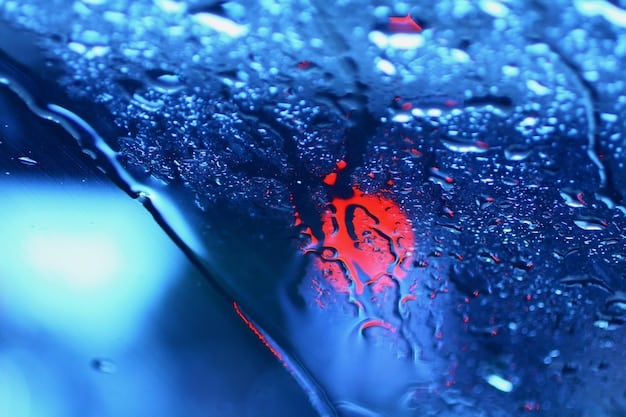
Common Mistakes to Avoid When Waxing Your Car
Even with the best products, mistakes during the waxing process can undermine your efforts, leading to suboptimal results or even paint damage. Recognizing and avoiding these common pitfalls is as important as learning the correct techniques. A little foresight can save a lot of frustration and ensure a flawless finish.
From improper surface preparation to incorrect buffing, each error can detract from the paint’s appearance and the wax’s protective capabilities. Attention to detail is paramount in car detailing, especially when it comes to the final protective layers.
Over-Applying Wax and Hazy Residue
One of the most frequent mistakes is applying too much wax. People often believe that a thicker layer provides more protection, but this is a misconception. Wax should be applied in a very thin, uniform layer.
Consequences of over-application:
- Difficulty in Removal: Excess wax becomes difficult to buff off, often leaving behind stubborn, hazy residue or streaking.
- Product Waste: Using more product than necessary is inefficient and costly.
- Reduced Clarity: Thick layers can sometimes dull the paint’s luster rather than enhance it.
A little goes a long way. The goal is to cover the surface evenly, not to stack a thick coat. If you find yourself struggling with removal, you likely applied too much. Always use an applicator that allows for controlled, thin application.
Waxing in Direct Sunlight or on a Hot Surface
Applying wax in direct sunlight or on a hot car surface is a recipe for disaster. The heat causes the wax to dry too quickly, making it difficult to spread evenly and almost impossible to buff off without streaking or marring.
Ideal conditions for waxing:
- Shady Area: Always wax your car in a shaded or indoor environment.
- Cool Surface: Ensure the car’s paint is cool to the touch before starting.
- Low Humidity: While less critical, lower humidity can also aid in easier application and removal.
The rapid drying under heat can also lead to the wax bonding improperly, reducing its durability and protective qualities. Always wait for the paint to cool down, or choose a time of day when the sun is not intensely hitting your vehicle.
Using Contaminated or Incorrect Towels
The type and cleanliness of your buffing towels are crucial. Using dirty, old, or low-quality towels can introduce scratches, lint, or residue, negating all your hard work. Microfiber towels are the industry standard for safe and effective wax removal.
Best practices for towels:
- High-Quality Microfiber: Invest in soft, plush, edgeless microfiber towels specifically designed for detailing.
- Dedicated Towels: Use separate towels for wax removal than for other detailing tasks (e.g., wheel cleaning, interior cleaning) to prevent cross-contamination.
- Frequent Washing: Wash microfiber towels regularly with a dedicated microfiber detergent, and avoid fabric softeners, which can reduce absorbency.
A single particle of dirt or an abrasive fiber in a towel can inflict swirl marks that detract from an otherwise perfect finish. Always inspect your towels before use and discard any that feel rough or have picked up debris.
Maintaining Your Vehicle’s Shine: Post-Wax Care
Applying the perfect wax is just the first step in long-term paint protection and aesthetics. Proper post-wax care is essential to maximize the durability of your chosen product and maintain that fresh, showroom finish. Without ongoing maintenance, even the best wax will degrade prematurely, leaving your paint vulnerable.
Consistent care not only preserves the wax layer but also prevents the build-up of contaminants that can etch into the paint. This proactive approach ensures your vehicle looks its best for longer and makes subsequent detailing tasks easier.
Regular Washing: Gentle Methods to Preserve Wax
Frequent, gentle washing is crucial for maintaining your vehicle’s waxed surface. The goal is to remove loose dirt and contaminants before they have a chance to bond with the wax layer or etch into the paint.
- Two-Bucket Method: Use two buckets, one for soapy water and one for rinsing your wash mitt, to prevent transferring abrasive dirt back to the paint.
- pH-Neutral Shampoo: Always use a pH-neutral car shampoo specifically designed to be wax-safe. Harsh detergents can strip wax prematurely.
- Gentle Wash Mitts: Use a soft microfiber wash mitt or lambswool mitt to minimize friction and prevent swirl marks.
- Rinse Often: Rinse the car frequently during washing to prevent soap from drying on the surface, especially in warmer conditions.
Avoid automatic car washes that use harsh brushes and chemicals, as these can quickly degrade or remove your wax protection. Hand washing is always the safest and most effective method for a waxed vehicle.
Quick Detailers and Spray Waxes: Boosting Protection Between Washes
Quick detailers and ceramic spray waxes/sealants are excellent tools for enhancing your vehicle’s shine and adding a temporary layer of protection between full washes. These products offer a quick and easy way to maintain a freshly detailed look.
Uses for these products:
- Post-Wash Drying Aid: Applied to a wet car immediately after washing, they can aid in the drying process while leaving behind a slick, protective layer.
- Light Dust and Fingerprint Removal: Perfect for wiping away light dust, fingerprints, or smudges, restoring gloss without a full wash.
- Hydrophobicity Boost: Many modern spray waxes and detailers contain SiO2 or polymers that enhance water beading and slickness, prolonging the effectiveness of the underlying wax or sealant.
Always use a clean, soft microfiber towel with these products, spraying onto the towel first or directly onto a small section of the paint, then wiping gently. Never use them on heavily soiled surfaces, as this can cause scratching.
Inspection and Re-Application Schedule
Regularly inspecting your vehicle’s paintwork is key to understanding when it’s time for re-application of wax or sealant. The primary indicator of needing new protection is the loss of water-beading or sheeting properties.
How to tell if your wax is failing:
- Reduced Hydrophobicity: Water no longer beads tightly on the surface but instead spreads out or “sheets” off slowly.
- Dullness: The paint begins to look less glossy and vibrant.
- Contaminant Adhesion: Dirt and grime seem to stick more readily to the surface.
The re-application schedule will depend heavily on the type of protection you’re using (carnauba, synthetic, ceramic), environmental exposure, and how frequently you wash the car. Generally, carnauba waxes need re-application every 1-3 months, synthetic sealants every 4-8 months, and ceramic coatings can last for years with proper maintenance using ceramic boosters.
Emerging Trends and What to Expect in 2025
The world of automotive detailing is constantly evolving, with new technologies and formulations emerging regularly. Staying informed about these trends can help you make better decisions for your vehicle’s long-term care. As we move into 2025, several key areas are shaping the future of car wax and paint protection.
These innovations aim to offer greater durability, ease of use, and environmental responsibility, pushing the boundaries of what’s possible in vehicle aesthetics and protection.
Hybrid Formulations: The Best of Both Worlds
One of the most significant trends is the rise of hybrid formulations that combine the best properties of different traditional products. These often blend carnauba wax with synthetic polymers or even infuse ceramic elements into a sealant base.
Benefits of hybrid waxes:
- Enhanced Durability: Synthetics extend the life of natural carnauba.
- Improved Shine: Carnauba adds depth, while polymers provide clarity.
- Increased Hydrophobicity: Ceramic-infused hybrids offer superior water repellency.
- Eco-Friendly Options: Manufacturers are increasingly focusing on biodegradable and VOC-compliant formulas.
These hybrid products aim to offer a balanced performance, providing excellent aesthetic appeal with improved longevity and protection, without the full commitment or cost of a dedicated ceramic coating.
Eco-Friendly and Sustainable Solutions
As environmental consciousness grows, the detailing industry is responding with more eco-friendly and sustainable product options. Consumers are increasingly seeking products that perform well without causing harm to the environment.
Emerging trends in sustainability:
- Biodegradable Formulations: Products designed to break down naturally after use.
- Waterless Car Wash Systems: Reducing water consumption in detailing.
- Plant-Based Ingredients: Shifting away from petroleum-based chemicals where possible.
- Recycled Packaging: Manufacturers using more sustainable packaging materials.
Expect to see more “green” certifications and transparency from brands regarding their ingredient sourcing and manufacturing processes. These practices benefit both the environment and, often, the user by reducing exposure to harsh chemicals.
Advanced Application Technologies and DIY Coatings
The complexity of applying some professional-grade coatings has historically limited them to professional detailers. However, 2025 is seeing a surge in advanced DIY-friendly ceramic coatings and application methods.
Innovations in application:
- Ceramic Sprays and Wipes: Easier, less intimidating ways for consumers to apply ceramic protection.
- Foam-On Sealants: Products that can be applied via a foam cannon during washing, offering quick and even coverage.
- Smart Applicators: Tools that ensure uniform thickness and easier buffing.
These advancements democratize advanced paint protection, making high-level detailing results more accessible to the average car owner. However, proper surface prep remains critical regardless of the application method.
Future-Proofing Your Car’s Finish in a Changing Climate
As global climates become more unpredictable, with increasing UV exposure, acid rain, and extreme weather events, the need for robust paint protection has never been greater. Choosing the right car wax or coating in 2025 means considering these evolving environmental challenges.
Your vehicle’s paint is constantly battling against the elements, and investing in advanced, long-lasting protection is no longer just about aesthetics, but about preserving the integrity and value of your car in the face of these harsher conditions.
Adapting to Increased UV Radiation
The sun’s UV rays are a primary cause of paint degradation, leading to fading, oxidation, and clear coat failure over time. With concerns about increased UV indexes, choosing a wax or coating with strong UV inhibitors is paramount.
How to protect against UV:
- UV-Resistant Sealants: Many synthetic sealants are formulated with UV blockers to protect the clear coat.
- Ceramic Coatings: Offer superior UV protection due to their hard, chemical-resistant barrier.
- Regular Re-application: Ensures constant replenishment of the protective layer.
Parking in the shade and using car covers are also excellent supplementary methods to reduce UV exposure, working hand-in-hand with your chosen paint protection product.
Mitigating the Effects of Weather Extremes
From torrential downpours and hail to extreme heat and prolonged droughts, weather patterns are becoming more intense. Your car’s paint needs to withstand these varying conditions.
Protection strategies for extreme weather:
- Durable Coatings: Ceramic coatings are highly resistant to chemical etching from acid rain and bird droppings, common in various weather conditions.
- Hydrophobic Properties: Products that repel water efficiently reduce the likelihood of water spotting after rain or snow.
- Chemical Resistance: Waxes and sealants that stand up to road salt and de-icing chemicals are crucial for winter driving.
Selecting a product that offers robust, year-round protection, rather than just seasonal application, is becoming increasingly important for vehicles in all climate zones.
Longevity and Value Retention
In 2025, preserving the aesthetic and structural integrity of your vehicle’s paint is not just about pride of ownership; it’s a significant factor in maintaining its resale value. A well-maintained exterior speaks volumes about how a vehicle has been cared for.
Long-term benefits of superior paint protection:
- Higher Resale Value: A pristine paint finish can significantly increase trade-in or resale value.
- Reduced Repair Costs: Preventing oxidation, etching, and premature clear coat failure avoids costly paint correction or repainting.
- Easier Maintenance: Protected paint is easier and quicker to clean, saving time and money on detailing supplies.
By investing in the right wax or coating and adhering to a consistent maintenance schedule, you’re not just protecting your paint; you’re safeguarding your automotive investment against the rigors of time and environmental assault.
| Key Point | Brief Description |
|---|---|
| ✨ Carnauba Wax | Natural wax for deep, warm shine; lasts 1-3 months. Best for show cars. |
| 🛡️ Synthetic Sealants | Polymer-based for durable, sharp shine; lasts 4-8 months. Good for daily drivers. |
| 💎 Ceramic Coatings | SiO2-based for semi-permanent, hard protection and intense gloss; lasts years. |
| 🎨 Paint Specifics | Match wax to paint: Carnauba for dark, Sealants/Ceramics for metallics, special products for matte. |
Frequently Asked Questions About Car Wax
Carnauba wax is a natural protectant derived from palm trees, known for its deep, warm glow and provides protection for about 1-3 months. Synthetic sealants are man-made polymers offering stronger, longer-lasting protection (4-8 months) and a sharper, more reflective shine, with enhanced resistance to environmental contaminants.
While you can, applying carnauba wax over a ceramic coating isn’t typically recommended as it can temporarily mask the coating’s hydrophobic properties and potentially interfere with its self-cleaning effects. Instead, use a ceramic-specific topper or boost spray to maintain and prolong the coating’s life and performance.
The frequency depends on the wax type and environmental exposure. Carnauba waxes generally require re-application every 1-3 months. Synthetic sealants can last 4-8 months, while ceramic coatings can protect for several years. Always monitor water beading and regularly inspect your paint for signs of diminished protection to determine re-application needs.
Yes, absolutely. Using a clay bar is a crucial step for proper paint preparation before waxing or sealing. It safely removes embedded contaminants (like industrial fallout, tree sap, and tar) that washing alone cannot, creating a perfectly smooth surface for the wax to bond to, maximizing its effectiveness and longevity.
For matte or satin finishes, it is crucial to use products specifically designed for them. Traditional waxes and polishes will add gloss and ruin the unique flat appearance. Opt for specialized matte paint sealants or ceramic coatings formulated to protect without altering the characteristic non-reflective look.
Conclusion
Choosing the right car wax is a fundamental aspect of effective vehicle maintenance and a testament to an owner’s dedication to their car’s longevity and appearance. As the detailing industry rapidly evolves, understanding the nuances between natural carnauba, advanced synthetic sealants, and cutting-edge ceramic coatings is essential. Each offers distinct advantages tailored to specific paint types, aesthetic goals, and environmental challenges. By prioritizing proper preparation, applying correctly, and maintaining diligently, you not only enhance your car’s visual appeal but also fortify its paintwork against the myriad of threats it faces daily. Ultimately, a well-chosen and properly applied protective layer is an investment in your vehicle’s future, ensuring its shine endures for years to come.
